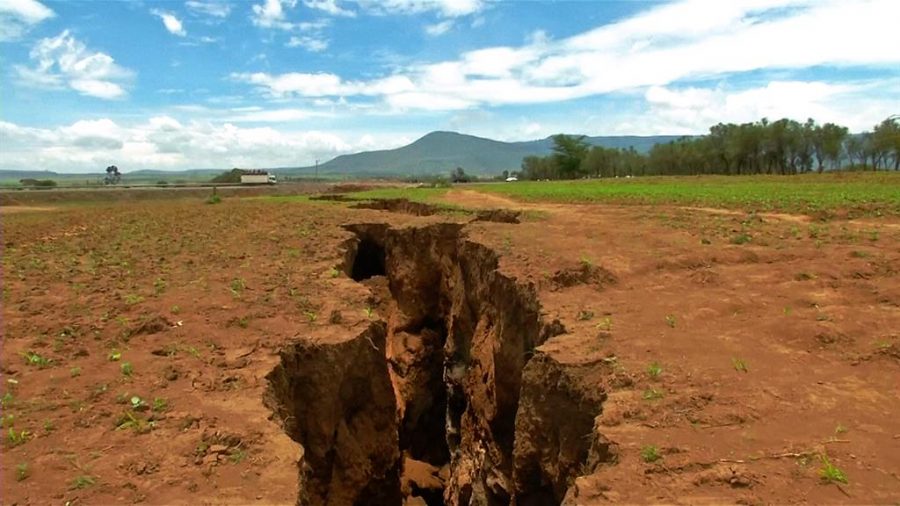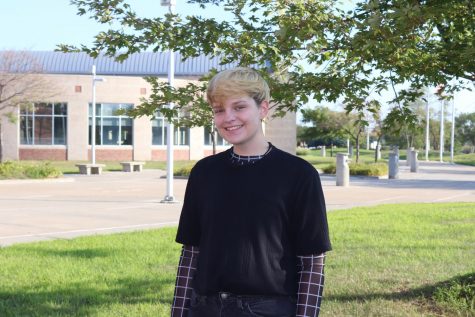The rupture in Africa
The natural splitting of plates in Africa creating a fault that can lead to a new ocean
As parts of Africa are cracking it is a chance for scientists to learn more about the Earth and how the plates work. David Jackson from temblor which is a source where they measure earthquakes. “A crack of this magnitude does not form overnight. The rifting process in East Africa is taking place at a rate of approximately 0.25 inches per year, or in other words, unnoticeable to most.”
September 3, 2020
The Great Rift in the East Africa Valley has been a big concern for residents in Africa. This rift is 3728 miles long, making this fault the longest continental seismic fault system on earth.
“The past 30 million years the plate known as the Arabian Plate has slowly been moving away from Africa. The Arabian plate is moving around 1 inch a year.” according to NBC News. This ground is very susceptible to seismic and volcanic activity. Also, if the land does successfully split it would lead to a new ocean. One example of this happening before is the South Atlantic Ocean, which was caused due to the parting between Europe and Africa.
“In 5 million to 10 million years, the tectonic movement will split the African continent into two and create a new ocean basin.” Stated by the University of Rochester.
Africa’s tectonic plates have been studied for several years and lots of predictions have been made. With better technology and tools, this process has been easier and will help the people understand the ground movement and protect people from it.
With the ground cracking this can lead to more problems besides Africa splitting into two. This causes earth fissures, which are long, narrow cracks in the ground, and they can run on for miles and can be hundreds of feet deep. This can lead to many issues in the future.
One common thing with rifts is distant earthquakes and faulting are more active than ever. This is causing the ground to move and houses have completely been dismantled due to the movement in the ground. However, residents learn how to build houses that can resist this shaking. This is a very dangerous place for people to live because of the uncertainty they can face.
In September 2016, 20 people were killed and 269 were injured due to an earthquake in Tanzania according to the World Bank. With more than 30 million urban poor people living in the East Africa Valley, this can lead to devastating blows if an earthquake hits.
“This is the only place on Earth where you can study how continental rift becomes an oceanic rift,” Christopher Moore, studying doctor at the University of Leeds in the United Kingdom, said. He has been monitoring the movement of the plates in East Africa.
With seismic risks bound to happen, there are ways people can help. The Global Facility for Disaster Reduction and Recovery (GFDRR) has created a workshop and created stocks so, if any damage hits these places, they will be able to cover it. This is a long process, some geologists say that it will be thousands of years before Africa fully splits. What they can do is be prepared and take this opportunity to learn about the Earth’s plates and how they can shift.
The Great Rift in the East Africa Valley has been a big concern for residents in Africa. This rift is 3728 miles long, making this fault the longest continental seismic fault system on earth.
“The past 30 million years the plate known as the Arabian Plate has slowly been moving away from Africa. The Arabian plate is moving around 1 inch a year.” according to NBC News. This ground is very susceptible to seismic and volcanic activity. Also, if the land does successfully split it would lead to a new ocean. One example of this happening before is the South Atlantic Ocean, which was caused due to the parting between Europe and Africa.
“In 5 million to 10 million years, the tectonic movement will split the African continent into two and create a new ocean basin.” Stated by the University of Rochester.
Africa’s tectonic plates have been studied for several years and lots of predictions have been made. With better technology and tools, this process has been easier and will help the people understand the ground movement and protect people from it.
With the ground cracking this can lead to more problems besides Africa splitting into two. This causes earth fissures, which are long, narrow cracks in the ground, and they can run on for miles and can be hundreds of feet deep. This can lead to many issues in the future.
One common thing with rifts is distant earthquakes and faulting are more active than ever. This is causing the ground to move and houses have completely been dismantled due to the movement in the ground. However, residents learn how to build houses that can resist this shaking. This is a very dangerous place for people to live because of the uncertainty they can face.
In September 2016, 20 people were killed and 269 were injured due to an earthquake in Tanzania according to the World Bank. With more than 30 million urban poor people living in the East Africa Valley, this can lead to devastating blows if an earthquake hits.
“This is the only place on Earth where you can study how continental rift becomes an oceanic rift,” Christopher Moore, studying doctor at the University of Leeds in the United Kingdom, said. He has been monitoring the movement of the plates in East Africa.
With seismic risks bound to happen, there are ways people can help. The Global Facility for Disaster Reduction and Recovery (GFDRR) has created a workshop and created stocks so, if any damage hits these places, they will be able to cover it. This is a long process, some geologists say that it will be thousands of years before Africa fully splits. What they can do is be prepared and take this opportunity to learn about the Earth’s plates and how they can shift.







